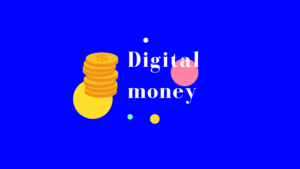Last updated on May 28, 2020
Evidence suggests that social media and too much screen time can increase the risk of depression and anxiety.This can negatively impact on our sleep and increase stress levels too.
But the good news is that technology can also be very beneficial for our mental health. The advent of apps like Headspace, Calm and Stop, Breathe & Think use technology to help people manage a number of mental health conditions such as anxiety and depression.
Read our guide below which aims to walk you through how technology can be used to manage stress beyond the standard meditation apps. Business owners can help employees can manage their stress, workloads, and working hours using technology – something that might not immediately be associated with stress relief.
AI can increase efficiency
Productivity is a buzzword in the business world right now, and it’s driven by technological advances. Artificial intelligence (AI) is driving efficiencies by eliminating manual, repetitive and time-consuming tasks like data re-entry and employee time tracking.
Employees with jobs that require a lot of manual data input could save hours by using technology that now comes as standard in many of the latest versions of the software solutions they use daily, like their financial systems or CRM solution.
It’s important to keep the technology your workers use up to date, as legacy systems that don’t work effectively can contribute to stress and additional, unnecessary work. Additionally, Randstad found that one of the top factors in employee satisfaction is having the latest digital and technology tools.
Engaging intranet platforms can forge stronger connection with remote staff
Businesses with frontline or remote workers consistently report issues with engagement; 21% of businesses cite low engagement amongst frontline staff as a barrier, while 78% believe connecting with those employees is the key to success (Harvard Business Review).
While the statistics supporting remote working for employees are endless, with improved satisfaction, increased productivity and a better work-life balance just a few of the benefits, it can be easy for those workers to feel out of the loop with the office and company culture; 21% report feeling lonely and struggle with communication on employees monitoring software.
Businesses are using intranet and communication platforms to help bring those remote employees into the fold. By keeping up-to-date with key business updates and more informal topics, remote workers feel like they’re truly a part of your organization’s culture. You can use this space to share social media feeds, event details or even take the opportunity to publish focus pieces on those remote workers to introduce them to the rest of your workforce.
Time management tools can help staffavoid being overworked
Longer working hours are becoming a widespread issue thanks to our always-on culture. Employees feel obligated to either work longer hours or to be contactable and working outside of hours, with 50% of people checking their emails outside of work (Dissent). Working more hours than standard can affect health, as the Australian National University found anything over 39 hours a week could be detrimental to health.
Time management can help employees feel more in control of their workload and can reduce the pressure they feel to work longer hours. Ultimately, management must play a role in helping employees to reduce extensive working hours, but workers can proactively take steps to support themselves.
There’s a wide range of time management tools available either standalone and for free, or as part of a business software package like Office 365, that can help workers manage their time more effectively. From personal to-do lists to more comprehensive team or business-wide solutions where tasks can be assigned with a deadline and space for updates, the sky is the limit.
Reducing stress in the work environment needs long term commitment
Stress, and in particular workplace stress, is a complex beast that won’t be solved with one solution. In addition to using technology to manage stress, employees must be supported by their managers and businesses. But, amidst all of the headlines that identify technology as a killer of productivity and mental health, it’s reassuring that it can also be used to vastly improve them, too.
Article produced by Natasha Bougourd from TSG, a managed IT services company in London and beyond, specializing in IT support and solutions, security and applications including Office 365 and Sage.




